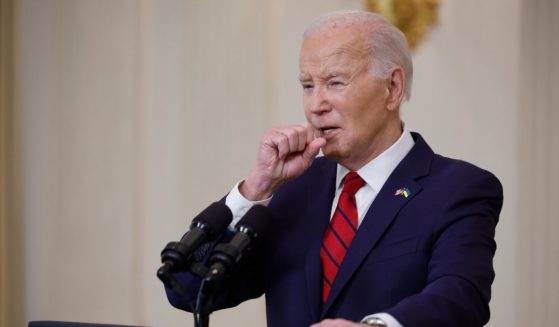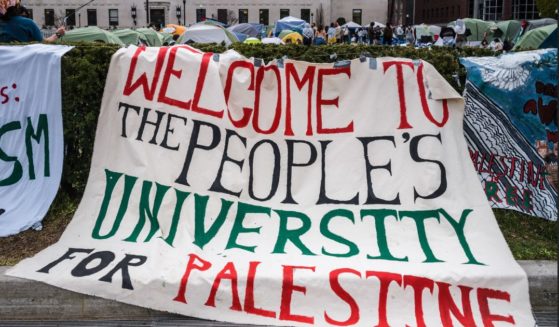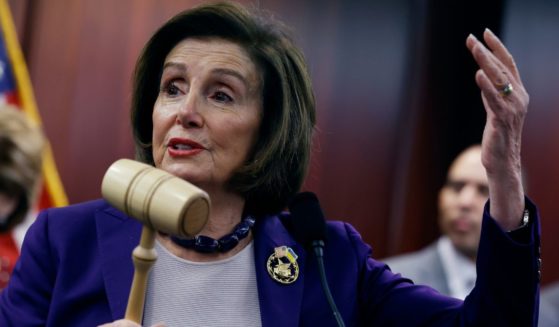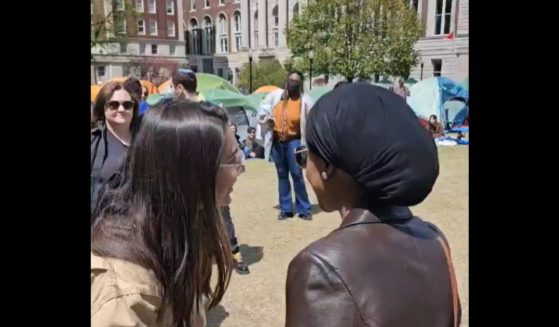Oregon County Moves One Step Closer to Joining Idaho: Will Officially Vote on Greater Idaho Proposal
Another county in Oregon will now get to decide whether it supports a plan to secede from the state and join Idaho.
This November, Harney County residents will get to vote on the “Greater Idaho” proposal, which seeks to change the Oregon-Idaho border, according to KTVZ-TV.
One of the two main groups behind the initiative, “Move Oregon’s Border,” told the outlet that it had collected the necessary signatures for the proposal to be on the ballot.
According to the Greater Idaho website, Harney County Clerk Derrin Robinson said in a news release, “The Question to be voted on by the people of Harney County is: Shall the County Court meet three times annually to discuss promoting Harney County’s interests regarding relocation of the state border?”
The reasoning behind the Greater Idaho plan is to create a better Idaho so that counties with more conservative populations can join a red state, according to the Greater Idaho website. The website also says that through the approvals of the plan at the county level, it seeks to “convince state legislators to stop holding rural Oregon counties captive in a blue state.”
Seven counties in Oregon have already voted in favor of the Greater Idaho plan, according to the movement’s website.
Harney County will be the next in line to vote on this initiative, while Move Oregon’s Border is still working toward obtaining the necessary signatures in six more counties, the site says.
Additionally, the website says that county commissioners have been asked — in five counties that Move Oregon’s Border was not allowed to distribute petitions in — to place a question regarding Greater Idaho on their ballots.
Mike McCarter, the president of Citizens for Greater Idaho and Move Oregon’s Border, told KTVZ that many people in rural Oregon feel they are ignored. While he thinks it is possible to rectify the divide between rural and urban areas, he said it seems that policies in Oregon have continued to go in only one direction.
“And that’s because 78 percent of the vote is in northwest Oregon, and that controls the whole state,” McCarter told KTVZ.
To me, this movement truly is intriguing, and I am anxious to see where it goes and how it all works out. While there is some hope this will come to fruition, it should be noted that there plenty of obstacles to overcome before the Greater Idaho proposal to come to fruition.
In order for the plan to move forward, the state legislatures of at least Oregon and Idaho — plus California, if an optional phase two of the proposal is pursued — would need to decide to support the change.
Then, if the state legislatures agree to the new alignment, the U.S. House of Representatives and the U.S. Senate would need to approve it in order for it to become reality. Effectively, it’s the legislative bodies that have the true power to change the borders, not the counties themselves.
It doesn’t seem logical to think that the stars will align for all these events to happen, but the plan’s proponents remain optimistic.
We expect that the chances of the Greater Idaho movement being successful depend entirely on whether we are able to convince northwestern Oregon to let our counties go.
— Citizens for Greater Idaho (@GreaterIdaho) July 20, 2021
Regardless of whether or not this will actually all work out, it is still great news for conservatives living in Oregon.
Rural citizens are fed up with the one-party rule in their state, and it makes sense why they would try to join a conservative state that more closely aligns with their beliefs.
Now, some might ask why these disgruntled citizens don’t just get up and move to Idaho.
In response to that notion, McCarter said that people in central, eastern and southern Oregon have connections to their land and communities.
“We can pick up and move to Idaho, that’s fine. But wouldn’t it be easier as a whole, the way people are voting, just to say okay, we want to become Idahoans, so let’s move the border, so we’re there without even having to pick up and go?” he said.
I understand what McCarter is talking about. Especially nowadays, people on either side of the aisle are often told to “leave if they don’t like it,” but it is not always that simple.
When I was 6, I moved to the house my dad and my grandfather were each raised in. I grew up hearing stories about what the house looked like throughout the years, what portions of the home my great-grandfather added to it, how he built the houses down the street and when my grandpa updated this or that.
Learning this history has eternally tethered me to that house and the land where I grew up. In other words, I know what it is like to be connected to a distinct property or geographical area as well as have the desire to retain it for future generations.
For these citizens, they don’t want to leave — they want to stay and fix the problem.
There are plenty of Republican-filled, rural counties in blue states across this country, many of whom might feel the same — that they would like to leave but for some unquantifiable reason, they just can’t. For those in that situation, I think they should pay close attention to how this movement in Oregon shakes out.
Rural Oregonians are sick and tired of their lives being dictated by a liberal government that does not care about them or have their best interests in mind. It seems that through the Greater Idaho movement, these citizens may have come up with the only solution that allows them to stay where they are and change their situation for the better.
That takes ingenuity. It is undoubtedly admirable.
Even if the Greater Idaho project doesn’t work out, those involved in it should be looked to for inspiration. They saw a problem, and they created a solution.
Even though the mountain before them is an impossibly high one to climb, they just keep on climbing, putting in the work, garnering signatures and getting more counties to include it on their ballots, in hopes of pressuring the state legislatures to start discussing this more seriously.
The bottom line is, they are doing what needs to be done to get one step closer to achieving their goal.
That is what America is all about.
CORRECTION, July 23, 2021: This article previously implied that counties need to vote in favor of joining Idaho in order for the relevant states’ borders to be changed. In fact, the decision would be in the hands of state legislatures and Congress, not the county residents. This article also previously implied that the California state legislature would need to approve the changes, but that would only be the case if an optional phase two of the proposal is pursued. We apologize to our readers for the errors.
Truth and Accuracy
We are committed to truth and accuracy in all of our journalism. Read our editorial standards.











